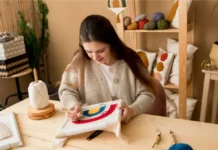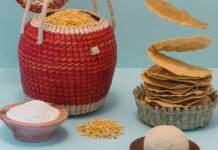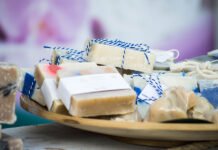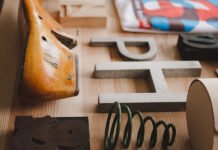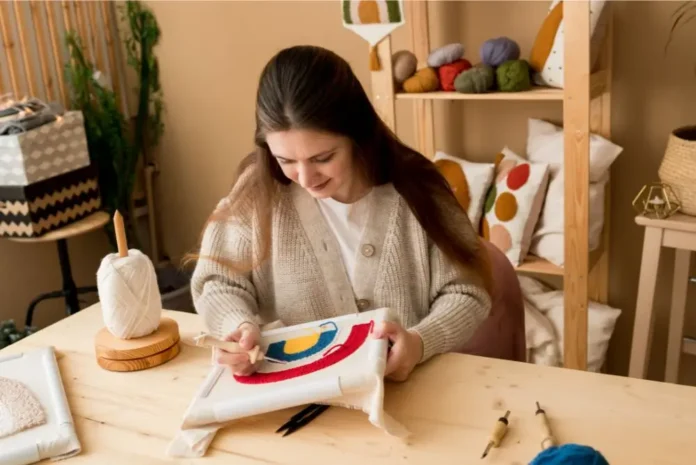Are you curious about punch needle embroidery but feel overwhelmed about where to start? Maybe you’ve seen beautiful punch needle projects on social media and wonder if you could create something similar? I felt the exact same way before I picked up my first punch needle tool – confused but excited!
Table of Contents
What is Punch Needle Embroidery?
Think of it as the art of punching special hollow needles threaded with yarn or thread through the fabric to create loops on one side. The result? Beautifully textured pieces that look impressive but are surprisingly simple to make.
Essential Supplies for Beginners
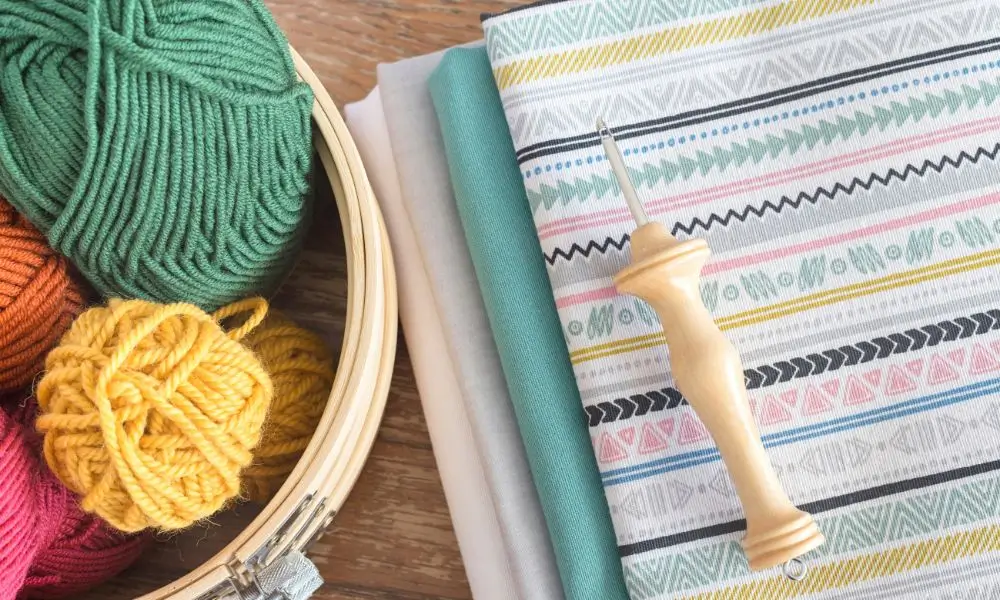
The Punch Needle Embroidery Tools
Your most important purchase will be the punch needle itself. For beginners, I recommend:
- Oxford Punch Needle: Perfect for working with yarn
- Ultra Punch Needle: Great for finer threads
- Adjustable Punch Needles: Allow you to change loop heights
When I started, I bought the cheapest punch needle I could find online – big mistake! It broke after two projects. Investing in a quality tool will save you frustration.
Foundation Fabric
You’ll need fabric that’s tight enough to hold your loops but not so tight that punching becomes difficult. Monk’s cloth is the gold standard for beginners because:
- It has an even weave
- Holds loops securely
- Is affordable and widely available

Punch Needle Embroidery Hoop or Frame
Your fabric needs to be drum-tight while working. A good hoop or frame is essential for:
- Maintaining proper tension
- Preventing fabric puckering
- Creating even loops
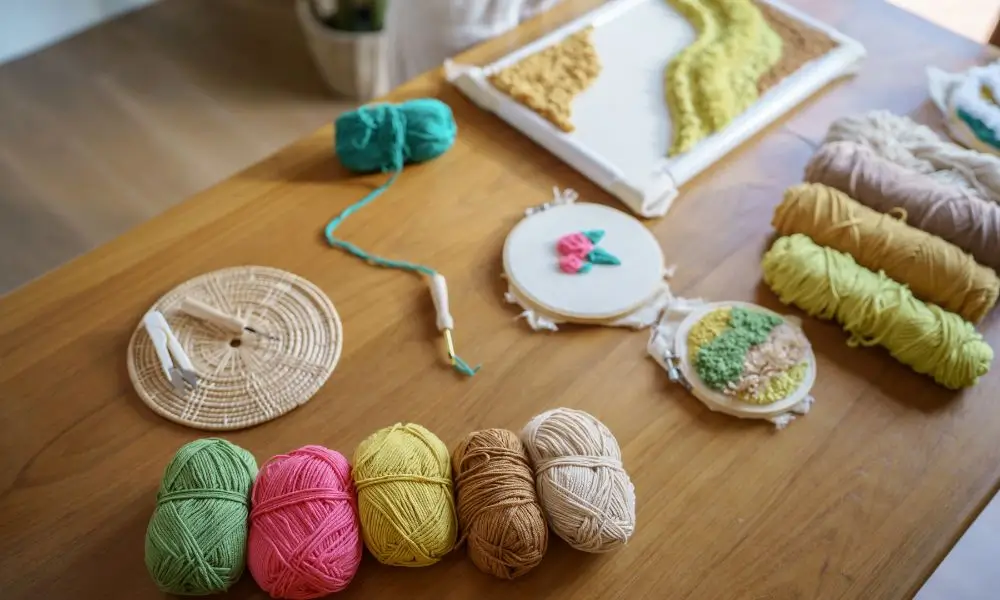
Punch Needle Embroidery Yarn or Thread
The type of material you choose affects your project’s look and feel:
- Worsted weight yarn: Creates chunky, cozy textures
- Embroidery floss: Produces detailed, fine work
- Wool yarn: Holds shape beautifully and felts slightly over time
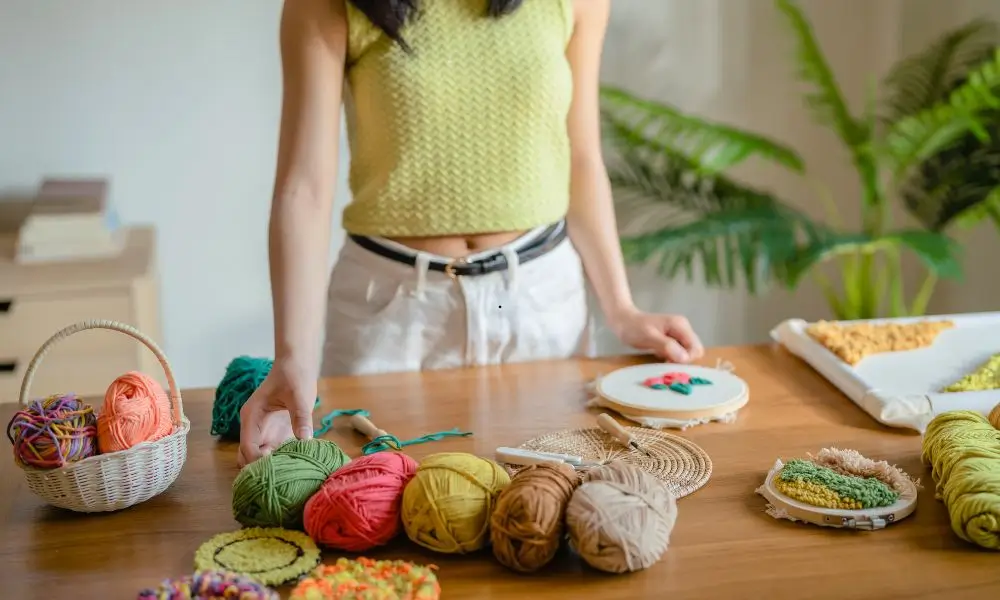
Setting Up Your First Punch Needle Embroidery Project
- Stretch your monk’s cloth in your hoop, pulling until it’s as tight as a drum
- Transfer your design using a water-soluble pen
- Thread your punch needle according to manufacturer’s instructions
- Hold your needle at a 90-degree angle to your fabric
- Push the needle all the way down to the handle
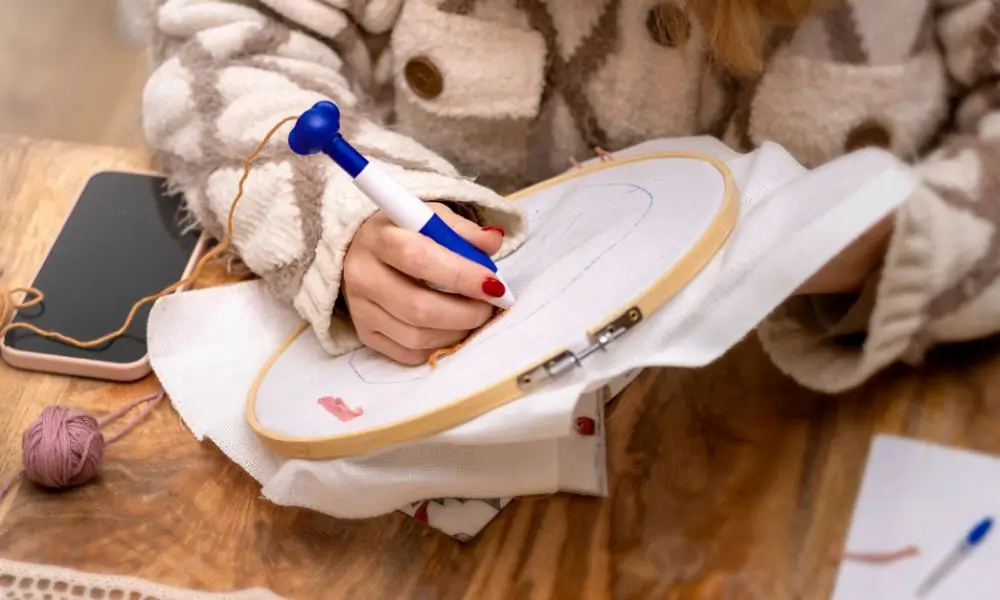
Common Beginner Mistakes (That I’ve Definitely Made!)
Not Maintaining Proper Tension
My first project looked like a rumpled mess because my fabric wasn’t tight enough. Your foundation fabric must be stretched extremely tight – more than you might think necessary.
Pulling Loops Out Accidentally
Remember that your loops aren’t secured until you’ve worked several stitches. When I started, I kept accidentally pulling my work out because I’d lift my needle too far from the fabric between punches.
Inconsistent Punch Depth
For even loops, push your needle all the way down until the handle touches the fabric every single time. My early projects had wildly uneven texture until I developed this habit.
Your First Practice Project: Simple Coaster
Start with something small and functional. A 4-inch coaster is perfect because:
- It’s quick to complete
- Teaches all basic techniques
- Creates something useful
- Builds confidence for larger projects
Finishing Your Punch Needle Work
To complete your project:
- Trim any stray threads from the back
- For wall hangings, add a backing fabric
- For functional items like pillows, add a sturdy backing
- Seal the edges with whip stitching or hem tape
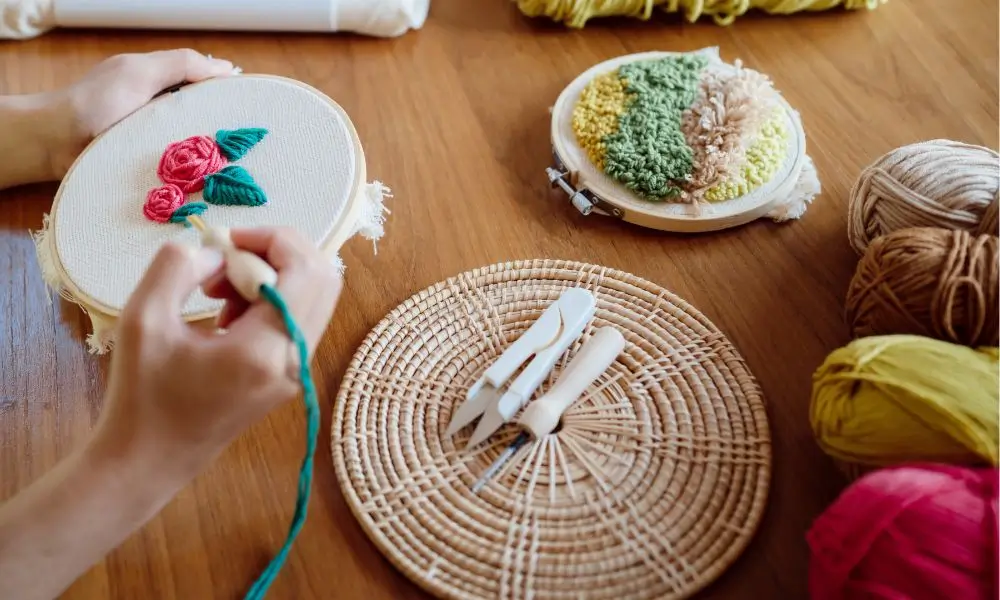
Troubleshooting Common Punch Needle Issues
Problem: Loops falling out Solution: Check your fabric tension and ensure you’re punching to consistent depths
Problem: Uneven texture Solution: Make sure you’re maintaining the same distance between punches
Problem: Yarn keeps coming unthreaded Solution: Leave a longer tail when threading your needle and check for rough spots on your needle
Taking Your Skills Further
Once you’ve mastered the basics, you might want to explore:
- Adding different loop heights within one project
- Combining multiple yarn weights
- Creating 3D effects with varied loop lengths
- Designing your own patterns
Where to Find Inspiration and Patterns
- Search “punch needle patterns for beginners” on Etsy
- Follow punch needle artists on Instagram
- Join punch needle Facebook groups
- Check your local craft store for workshops
Remember, too, that punch needle is very forgiving. Other crafts tend to make mistakes that are hard to correct. With punch needle, you can just pull out the loops and do them over until you get what you like.
Have you tried punch needle before? What project do you plan to create first with it? Let me know in the comments below

